If lots of unwanted websites popping up in your internet browser then most probably that your PC is affected by an adware (also known as ‘ad-supported’ software). It is a type of malicious software that designed to open lots of unwanted pop ups, display annoying ads, offers and deals. Unlike viruses, the ‘ad supported’ software will not delete or infect your files, but its actions will cause some problems with your internet browser. This is because, it’ll hijack your system, get full access to your browsers such as Firefox, MS Edge, Internet Explorer and Google Chrome and can change their settings. Of course, it did not ask you for permission and do it secretly as possible. Once your web-browser settings will be modified, you’ll be redirected to unwanted websites, some of which can be malicious or misleading pages. For this reason, we recommend that you begin the clean up of your personal computer as quickly as possible and thereby stop unwanted websites from opening automatically in your browser.

The adware that redirects your web-browsers to unwanted websites, is not a virus, but the virus behaves similarly. As a rootkit hides in the system, changes web-browser settings and blocks them from changing. Also the ad supported software can install additional browser extensions and modules that will inject ads within the Firefox, Google Chrome, Internet Explorer and Microsoft Edge’s screen. Moreover, the ad-supported software may install web-browser hijacker that once started, will change the web-browser’s start page and search provider. Even worse, the ‘ad supported’ software can be used to collect privacy data about you such as what pages you are opening, what you are looking for the Internet and so on. This confidential data, subsequently, may be sold to third parties.
Most often, the ad-supported software infects the most common web-browsers such as the Google Chrome, IE, Microsoft Edge and Firefox. But such malicious software as well may affect another internet browsers by changing its shortcuts (adding an argument like ‘http://site.address’ into Target field of a web browser’s shortcut file). So every time you launch the web browser, unwanted websites will be opening automatically. Even if you setup a new home page, an unwanted website will be the first thing you see when you start the Microsoft Edge, IE, Google Chrome and Mozilla Firefox.
It’s important, don’t use unwanted and questionable websites and don’t click on advertisements placed on it, as they can lead you to a more malicious or misleading web-pages. The best option is to use the tutorial posted below to clean your computer of ‘ad supported’ software and thus stop unwanted websites from opening automatically.
How to stop websites from opening automatically in Chrome, Firefox, IE and Edge
In the tutorial below, we’ll try to cover the MS Edge, Firefox, Internet Explorer and Chrome and provide general advice to stop automatic opening of spam websites and annoying ads. You may find some minor differences in your Microsoft Windows install. No matter, you should be okay if you follow the steps outlined below: uninstall all suspicious and unknown programs, reset internet browsers settings, fix browsers shortcuts, delete malicious scheduled tasks, run free malicious software removal tools. Certain of the steps will require you to restart your computer or close this web site. So, read this instructions carefully, then bookmark or print it for later reference.
To stop websites from opening automatically, complete the steps below:
- Manually
- Uninstall suspicious software
- Remove unwanted Scheduled Tasks
- Stop websites from opening automatically in Firefox by resetting web browser settings
- Stop automatic opening of websites in Internet Explorer
- Stop websites from opening automatically in Google Chrome
- Clean up the internet browsers shortcuts that have been infected by ad supported software
- Automatically
- Run AdBlocker to block websites from opening automatically
- Where the adware comes from
- To sum up
Manually
Read this “How to remove” section to know how to manually stop unwanted websites from opening automatically. Even if the step-by-step guide does not work for you, there are several free malicious software removers below that can easily handle such adware which redirects your web-browser to annoying webpages.
Uninstall suspicious software
First, you should try to identify and uninstall the program that causes the appearance of annoying ads or web browser redirects. Use the ‘Uninstall a program’ which is located in the ‘Control panel’.
Windows 10, 8.1, 8
Click the MS Windows logo, and then press Search ![]() . Type ‘Control panel’and press Enter like below.
. Type ‘Control panel’and press Enter like below.

Once the ‘Control Panel’ opens, press the ‘Uninstall a program’ link under Programs category as displayed in the figure below.

Windows 7, Vista, XP
Open Start menu and choose the ‘Control Panel’ at right as displayed in the figure below.

Then go to ‘Add/Remove Programs’ or ‘Uninstall a program’ (Microsoft Windows 7 or Vista) as shown in the figure below.

Carefully browse through the list of installed software and remove all dubious and unknown apps. We suggest to press ‘Installed programs’ and even sorts all installed programs by date. When you’ve found anything dubious that may be an adware or other potentially unwanted application (PUA), then choose this program and press ‘Uninstall’ in the upper part of the window. If the questionable application blocked from removal, then run Revo Uninstaller Freeware to fully get rid of it from your personal computer.
Remove unwanted Scheduled Tasks
Once installed, the adware can add a task in to the Windows Task Scheduler Library. Due to this, every time when you boot your computer, it will open an unwanted website. So, you need to check the Task Scheduler Library and remove all harmful tasks which have been created by ‘ad-supported’ software.
Press Windows and R keys on the keyboard at the same time. This shows a prompt that titled with Run. In the text field, type “taskschd.msc” (without the quotes) and press OK. Task Scheduler window opens. In the left-hand side, click “Task Scheduler Library”, as shown on the screen below.
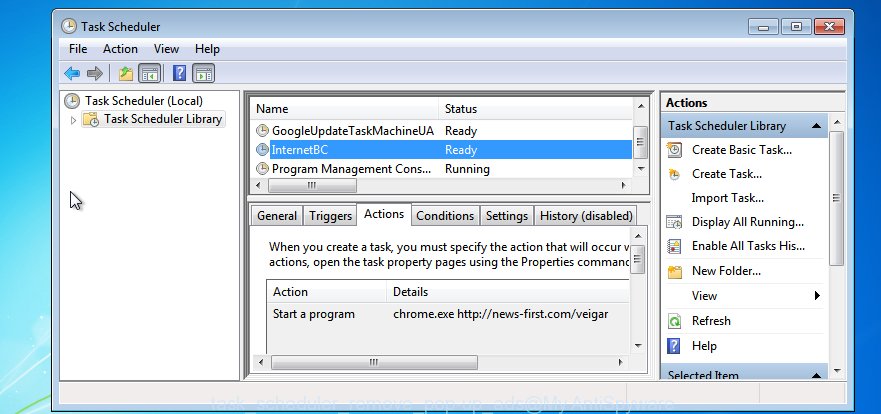
Task scheduler
In the middle part you will see a list of installed tasks. Please choose the first task, its properties will be show just below automatically. Next, click the Actions tab. Pay attention to that it launches on your computer. Found something like “explorer.exe http://site.address” or “chrome.exe http://site.address”, then remove this malicious task. If you are not sure that executes the task, check it through a search engine. If it is a component of the ‘ad-supported’ application, then this task also should be removed.
Having defined the task that you want to remove, then click on it with the right mouse button and select Delete as on the image below.

Delete a task
Repeat this step, if you have found a few tasks that have been created by adware and malware. Once is finished, close the Task Scheduler window.
Stop websites from opening automatically in Firefox by resetting web browser settings
Resetting Firefox web-browser will reset all the settings to their original state and will remove unwanted pop-up ads, malicious add-ons and extensions. Essential information like bookmarks, browsing history, passwords, cookies, auto-fill data and personal dictionaries will not be removed.
First, start the Firefox. Next, click the button in the form of three horizontal stripes (![]() ). It will display the drop-down menu. Next, press the Help button (
). It will display the drop-down menu. Next, press the Help button (![]() ).
).

In the Help menu press the “Troubleshooting Information”. In the upper-right corner of the “Troubleshooting Information” page press on “Refresh Firefox” button like below.

Confirm your action, press the “Refresh Firefox”.
Stop automatic opening of websites in Internet Explorer
If you find that Microsoft Internet Explorer browser settings such as new tab, search provider by default and homepage having been modified by ‘ad supported’ software responsible for redirects to unwanted websites, then you may revert back your settings, via the reset internet browser procedure.
First, launch the Internet Explorer, click ![]() ) button. Next, click “Internet Options” like below.
) button. Next, click “Internet Options” like below.

In the “Internet Options” screen select the Advanced tab. Next, click Reset button. The Internet Explorer will show the Reset Internet Explorer settings prompt. Select the “Delete personal settings” check box and click Reset button.

You will now need to reboot your computer for the changes to take effect. It will remove adware that responsible for browser redirect to the annoying Unwanted webpage, disable malicious and ad-supported browser’s extensions and restore the Internet Explorer’s settings like default search provider, new tab and home page to default state.
Stop websites from opening automatically in Google Chrome
Use the Reset web-browser tool of the Google Chrome to reset all its settings like home page, newtab and search provider to original defaults. This is a very useful utility to use, in the case of internet browser redirects to unwanted web sites, ads and annoying deals.
First launch the Chrome. Next, click the button in the form of three horizontal dots (![]() ).
).
It will display the Chrome menu. Choose More Tools, then press Extensions. Carefully browse through the list of installed extensions. If the list has the extension signed with “Installed by enterprise policy” or “Installed by your administrator”, then complete the following tutorial: Remove Chrome extensions installed by enterprise policy.
Open the Google Chrome menu once again. Further, click the option called “Settings”.

The web-browser will open the settings screen. Another way to show the Chrome’s settings – type chrome://settings in the internet browser adress bar and press Enter
Scroll down to the bottom of the page and press the “Advanced” link. Now scroll down until the “Reset” section is visible, as displayed on the image below and click the “Reset settings to their original defaults” button.

The Google Chrome will open the confirmation prompt as shown in the following example.

You need to confirm your action, click the “Reset” button. The web-browser will start the task of cleaning. When it is finished, the internet browser’s settings including newtab page, search engine and home page back to the values which have been when the Google Chrome was first installed on your PC system.
Clean up the internet browsers shortcuts that have been infected by ad supported software
Once the ad supported software is started, it can also change the web browser’s shortcut files, adding an argument like “http://site.address” into the Target field. Due to this, every time you run the web browser, it will open an unwanted website.
To clear the web-browser shortcut, right-click to it and select Properties. On the Shortcut tab, locate the Target field. Click inside, you will see a vertical line – arrow pointer, move it (using -> arrow key on your keyboard) to the right as possible. You will see a text like “http://site.address” which has been added here. You need to delete it.

When the text is removed, press the OK button. You need to clean all shortcuts of all your web-browsers, as they may be hijacked too.
Automatically
Manual removal guidance does not always help to completely delete the adware, as it is not easy to identify and delete components of ad supported software and all malicious files from hard disk. Therefore, it is recommended that you use malicious software removal utility to completely stop websites from opening automatically in your browser. Several free malicious software removal tools are currently available that can be used against the adware. The optimum method would be to use Zemana Anti Malware (ZAM), MalwareBytes Anti-Malware and Hitman Pro.
Stop websites from opening automatically with Zemana Anti-malware
Zemana Anti-malware highly recommended, because it can search for security threats such malware and adware which most ‘classic’ antivirus apps fail to pick up on. Moreover, if you have any security threats which cannot be fixed by this tool automatically, then Zemana Anti-malware provides 24X7 online assistance from the highly experienced support staff.
Download Zemana on your system from the following link.
164773 downloads
Author: Zemana Ltd
Category: Security tools
Update: July 16, 2019
After the downloading process is done, close all applications and windows on your PC. Double-click the install file called Zemana.AntiMalware.Setup. If the “User Account Control” prompt pops up as on the image below, click the “Yes” button.

It will open the “Setup wizard” that will help you setup Zemana on your system. Follow the prompts and don’t make any changes to default settings.

Once install is done successfully, Zemana will automatically start and you can see its main screen as on the image below.

Now click the “Scan” button to look for adware responsible for unwanted pop-up advertisements and browser redirects. This procedure can take quite a while, so please be patient. When a malware, adware or potentially unwanted applications are found, the count of the security threats will change accordingly. Wait until the the scanning is finished.

After Zemana has finished scanning your system, a list of all items found is produced. When you’re ready, click “Next” button. The Zemana will delete ad-supported software which redirects your web-browser to unwanted websites and move items to the program’s quarantine. Once that process is finished, you may be prompted to reboot the personal computer.
Use Hitman Pro to stop websites from opening automatically
Hitman Pro is a portable application which requires no hard setup to identify and get rid of adware and other malicious software. The program itself is small in size (only a few Mb). HitmanPro does not need any drivers and special dlls. It is probably easier to use than any alternative malware removal tools you have ever tried. Hitman Pro works on 64 and 32-bit versions of Windows 10, 8, 7 and XP. It proves that removal tool can be just as effective as the widely known antivirus programs.
Hitman Pro can be downloaded from the following link. Save it directly to your Windows Desktop.
When the download is done, open the directory in which you saved it and double-click the Hitman Pro icon. It will launch the Hitman Pro tool. If the User Account Control dialog box will ask you want to open the program, click Yes button to continue.

Next, click “Next” to perform a system scan for the adware that causes multiple intrusive popups, ads and deals. This process may take some time, so please be patient. While the HitmanPro utility is checking, you can see how many objects it has identified as being infected by malware.
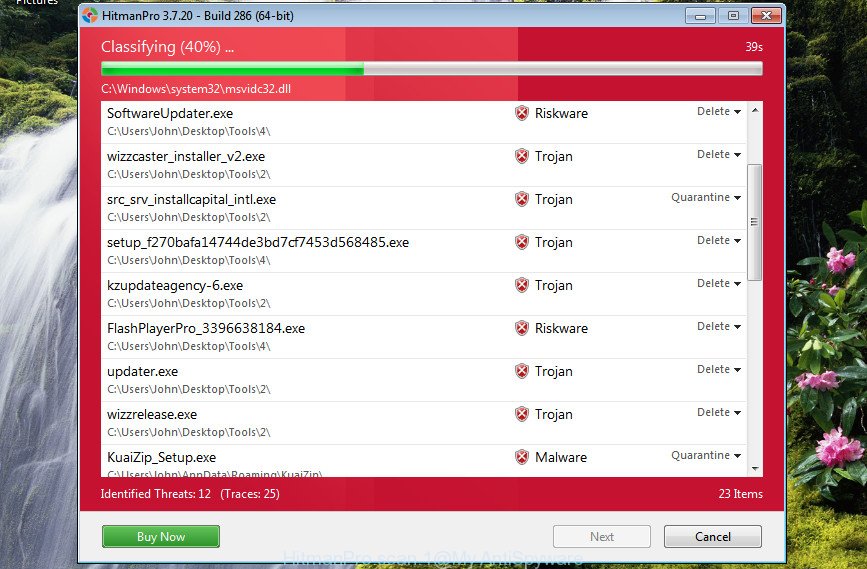
As the scanning ends, you can check all threats found on your personal computer as displayed below.
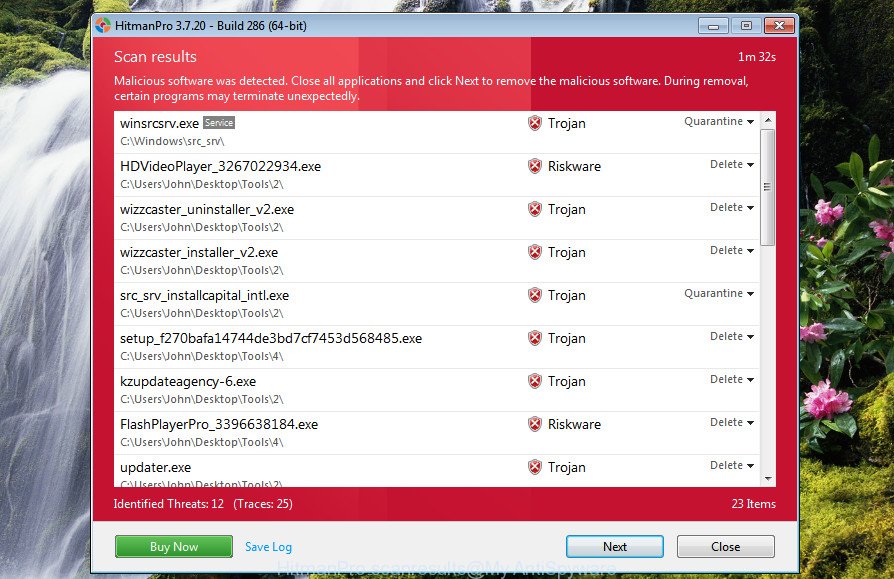
All detected threats will be marked. You can remove them all by simply click “Next” button. It will display a dialog box, press the “Activate free license” button. The Hitman Pro will begin to remove adware and other security threats. After that process is finished, the utility may ask you to restart your system.
Remove adware with Malwarebytes
You can delete adware automatically with a help of Malwarebytes Free. We suggest this free malicious software removal utility because it may easily delete browser hijacker infections, ad-supported software, potentially unwanted programs and toolbars with all their components such as files, folders and registry entries.
Visit the page linked below to download MalwareBytes. Save it directly to your MS Windows Desktop.
327037 downloads
Author: Malwarebytes
Category: Security tools
Update: April 15, 2020
Once downloading is finished, close all software and windows on your PC. Open a directory in which you saved it. Double-click on the icon that’s named mb3-setup as on the image below.
![]()
When the installation begins, you will see the “Setup wizard” that will help you setup Malwarebytes on your system.
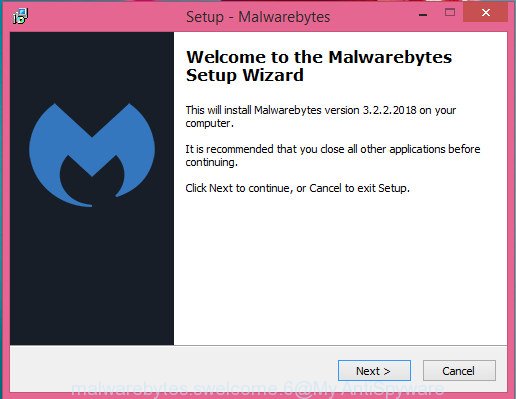
Once install is finished, you’ll see window as displayed in the figure below.
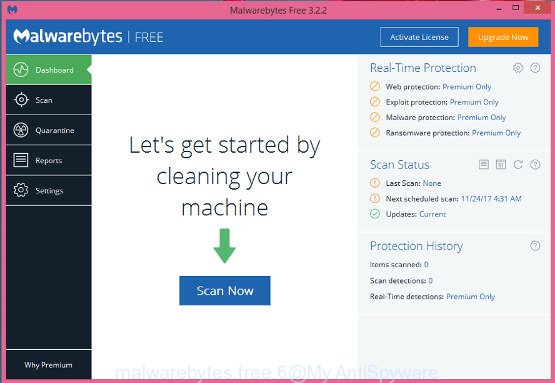
Now click the “Scan Now” button to scan for adware that causes multiple annoying advertisements. While the MalwareBytes AntiMalware is checking, you can see count of objects it has identified either as being malicious software.
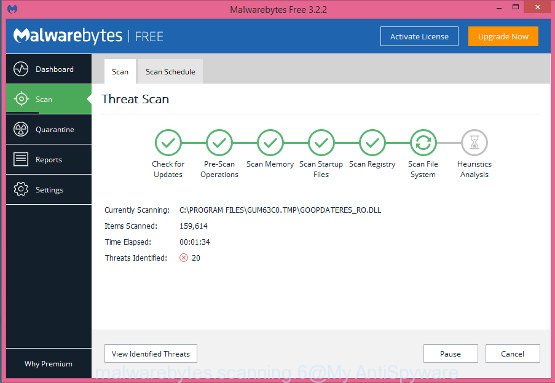
Once the scan is done, MalwareBytes will show a list of detected items. All detected items will be marked. You can remove them all by simply click “Quarantine Selected” button.
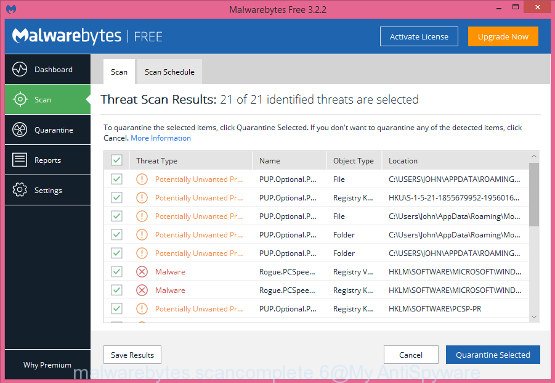
The Malwarebytes will now delete ad-supported software and add threats to the Quarantine. Once the cleaning procedure is done, you may be prompted to reboot your computer.
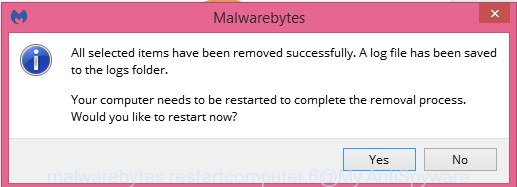
The following video explains few simple steps on how to remove hijacker infection, adware and other malware with MalwareBytes Free.
Run AdBlocker to block websites from opening automatically
One of the worst things is the fact that you cannot block all unwanted websites using only built-in Windows capabilities. However, there is a program out that you can use to block intrusive browser redirects, advertisements and pop-ups in any modern browsers including Chrome, IE, Microsoft Edge and Mozilla Firefox. It is named Adguard and it works very well.
AdGuard can be downloaded from the following link. Save it on your Desktop.
26839 downloads
Version: 6.4
Author: © Adguard
Category: Security tools
Update: November 15, 2018
After downloading it, run the downloaded file. You will see the “Setup Wizard” screen as displayed on the screen below.

Follow the prompts. When the installation is finished, you will see a window as shown in the figure below.

You can press “Skip” to close the install application and use the default settings, or click “Get Started” button to see an quick tutorial that will help you get to know AdGuard better.
In most cases, the default settings are enough and you do not need to change anything. Each time, when you start your system, AdGuard will launch automatically and block websites from opening automatically, as well as stop other harmful or misleading webpages. For an overview of all the features of the program, or to change its settings you can simply double-click on the AdGuard icon, which is located on your desktop.
Where the adware comes from
It’s very important to pay attention to additional checkboxes during the setup of free software to avoid installing of PUPs, adware, browser hijackers or other undesired programs. Never set up the third-party apps that the program wants to install with it.
To sum up
Now your computer should be clean of the adware that responsible for the appearance of unwanted websites, pop-up advertisements and deals. We suggest that you keep AdGuard (to help you stop unwanted pop-up ads and annoying malicious web sites) and Zemana Anti Malware (to periodically scan your PC for new adwares and other malware). Probably you are running an older version of Java or Adobe Flash Player. This can be a security risk, so download and install the latest version right now.
If you are still having problems while trying to remove Unwanted redirect from the Google Chrome, Internet Explorer, Mozilla Firefox and Edge, then ask for help in our Spyware/Malware removal forum.





















Thanks. The part about the Task Scheduler fixed me!